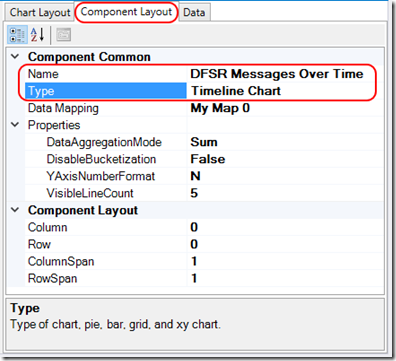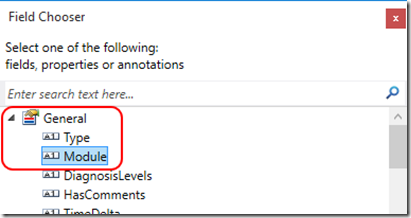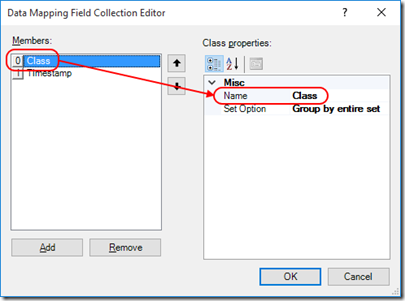Note
Access to this page requires authorization. You can try signing in or changing directories.
Access to this page requires authorization. You can try changing directories.
This post continues the series that started here.
Up to this point I’ve discussed building a parser for Message Analyzer that will interpret DFSR debug logs. The last thing I want to cover is the construction of some charts. These charts will provide a view of message throughput over time – something I’ve found useful in the past.
Chart – DFSR Messages Over Time
The first thing I’ll need to do is create a new chart. I do this by selecting the Session menu and then selecting New Viewer –> New Chart.
After doing so, I get a new chart view and the chart editing dialog to its right.
I’ll start by replacing the chart Name with something descriptive on the Chart Layout tab and then move to the Component Layout tab. On the Component Layout tab I’ll provide a chart title and change my Type to a Timeline Chart .The rest of the options I’ll leave as defaults –
Moving to the Data tab I’ll begin by clicking the ellipsis next to Column Fields and then adding a formula that will count messages –
I then click the ellipsis next to Arguments, add an argument and populate its FieldName with the MessageText field from my DFSRMessage in my DFSRDebug log parser –
So far my chart is going to count MessageText instances (which occur in every message).
Back in the Data tab of the chart editing dialog, I’ll click the ellipsis next to Row Fields –
The first entity I choose plots a separate line for each distinct value in that field.
I’m interested in total DFSR message volume over time so I’ll choose a field that is the same in every message. All of my messages are parsed by the DFSRDebug log parser so I’m going to choose General –> Module (Module stores the name of the parser) –
Lastly, I add another entity which is Global Annotations –> TimeStamp (this field is necessary for a Timeline Chart) –
The chart now plots DFSR Messages over Time –
I can save the chart from Session –> Charts –> Save Chart.
Chart – DFSR Messages by Class over Time
By changing the primary entry in the Row Fields described above, I can slice my data into separate categories. I’ll select Class from my DFSRDebug log parser DFSRMessage –
This plots DFSR Messages by Class over Time –
Chart – DFSR Messages by Method over Time
Similarly, I am able to plot DFSR Messages by Method over Time –
Filtering
Charts may be filtered in the same way as the Analysis Grid. By filtering for specific text in the MessageText field, I can reproduce the view produced in my earlier post -
Filter is DFSRDebug.MessageText contains "USN_RECORD:"
With the complete set of messages in my original post, DFSR Messages over Time appears as –
Next Up
Comments
- Anonymous
January 21, 2016
I love this whole series, and it's been a great introduction to Message Analyzer while developing something I've wanted, which is a parser for DFSR debug logs. I walked through your whole process and manually created each piece, and the analysis grid works perfectly. I ended up downloading your asset ZIP and installing your charts because I had some issues when I created them, but I had the same issue with your assets as well.
The issue I am seeing is that all three of the charts return the error "Chart data is unavailable - Either the Chart references non-existent data or the current filter removed any valid data." In the Session Explorer pane, all three charts and the grid show the same number of items, and I have no filters in place. I was finally able to work around the issue by applying a filter that removed the first entries from the debug log (the log header lines that start with *). Once I did that, the charts all worked just fine.
I am running Message Analyzer 1.3.1, which was released about a month after your series was posted, and I wonder if there was a change in the tool that affected handling of lines like this.
In any case, I wanted to pass on my findings. Thanks for a great tool!
Jamie - Anonymous
January 21, 2016
The comment has been removed - Anonymous
January 24, 2016
Hi Jamie
I'm glad you sorted it out. I've been a bit distracted and will be taking time off soon. I'll try to look into what you've discovered.












